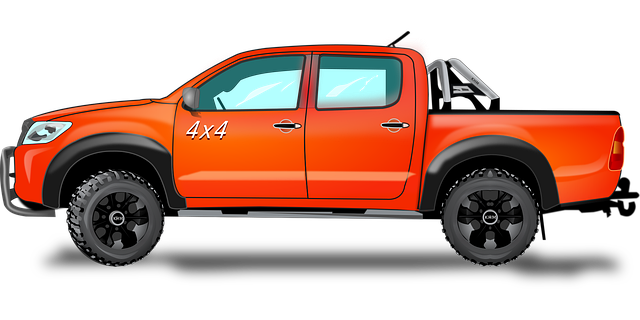Leaf springs, critical components in fleet trucks, absorb shocks and distribute weight for a smooth ride. Diagnosing fleet truck issues in Brownsville, TX using specialized tools requires assessing leaf spring health, as faulty springs cause handling problems and increased maintenance costs. Different types of leaf springs, like solid, twisted, semi-elliptical, and multi-leaf, offer varied levels of stability and flexibility to suit diverse driving conditions. Regular maintenance extends their lifespan and improves suspension system performance for safer, more efficient operation.
Leaf springs are vital components of truck suspensions, ensuring smooth rides and stable handling. This article explores the fundamental concepts of leaf springs, their types, and materials. We delve into diagnosing common issues in Brownsville, TX, using specialized tools for fleet trucks. Additionally, it provides effective maintenance strategies, including inspection routines and techniques for safe replacement, emphasizing the role of professional mechanics in keeping commercial trucks on the road.
- Understanding Leaf Springs: The Basic Concepts
- – Definition and purpose of leaf springs in truck suspensions
- – Types of leaf springs and their differences
Understanding Leaf Springs: The Basic Concepts

Leaf springs, also known as leaf-spring suspension systems, are a fundamental component in many vehicles, particularly heavy-duty ones like fleet trucks. These mechanical devices play a crucial role in vehicle dynamics and comfort. The basic concept involves a series of curved steel plates or leaves stacked and secured together, allowing for flexible movement while providing structural support. In the context of fleet Truck diagnosis tools Brownsville Tx, understanding leaf springs is essential as they contribute significantly to the overall performance and longevity of trucks.
The primary function of leaf springs is to transfer the weight of the vehicle evenly across its axle, ensuring a smooth ride and proper wheel alignment. They are designed to compress and decompress with road movements, absorbing shocks and bumps. This simple yet effective mechanism helps reduce the impact of uneven terrain on the vehicle’s body and passengers. When diagnosing issues with fleet trucks using specialized tools in Brownsville Tx, technicians should consider leaf spring health as a critical factor, as faulty springs can lead to handling problems, tire wear, and increased maintenance costs.
– Definition and purpose of leaf springs in truck suspensions

Leaf springs are an integral component of truck suspensions, designed to absorb and distribute the weight of the vehicle while ensuring a smooth ride. These spring elements, often found in heavy-duty trucks, play a pivotal role in maintaining control and stability during various driving conditions, especially when hauling cargo or navigating challenging terrain. With their flexible yet resilient nature, leaf springs offer a balanced approach to truck suspension systems, contributing to improved handling and comfort for both the vehicle and its fleet operations.
For fleet managers and mechanics in Brownsville, Texas, understanding the intricacies of leaf spring functionality is essential. Utilizing advanced truck diagnosis tools can help identify wear and tear, ensuring timely replacement or repair. Regular maintenance of these springs not only extends their lifespan but also optimizes the overall performance of the truck’s suspension system, leading to enhanced safety and efficiency for fleet vehicles operating in diverse environments.
– Types of leaf springs and their differences

Leaf springs come in various types, each with distinct characteristics and applications. The most common types include solid leaf springs and twisted leaf springs. Solid leaf springs, as the name suggests, are made from a single piece of metal, offering excellent stability and durability. They are often used in heavy-duty vehicles like fleet trucks for optimal performance during diagnosis tools checks in Brownsville Tx. Twisted leaf springs, on the other hand, feature a helical design that allows them to absorb shocks more efficiently, making them suitable for vehicles requiring enhanced ride comfort.
Another variant is the semi-elliptical leaf spring, which combines the strength of solid springs with improved flexibility from the elliptical shape. This type provides a balance between stability and shock absorption, commonly found in many passenger cars. Additionally, there are multi-leaf springs that consist of multiple layers of leaves stacked together, offering fine tunability for specific vehicle requirements. These diverse leaf spring types cater to various needs, ensuring optimal performance and passenger comfort across different vehicle models and driving conditions.
Leaf springs, an integral part of truck suspensions, play a vital role in ensuring smooth rides and stable handling. By understanding the different types and their unique characteristics, fleet managers in Brownsville, Tx can make informed decisions when selecting or maintaining these components. The right leaf spring choice can significantly impact vehicle performance, fuel efficiency, and overall passenger comfort, making it a crucial consideration for any truck diagnosis and maintenance routine.



